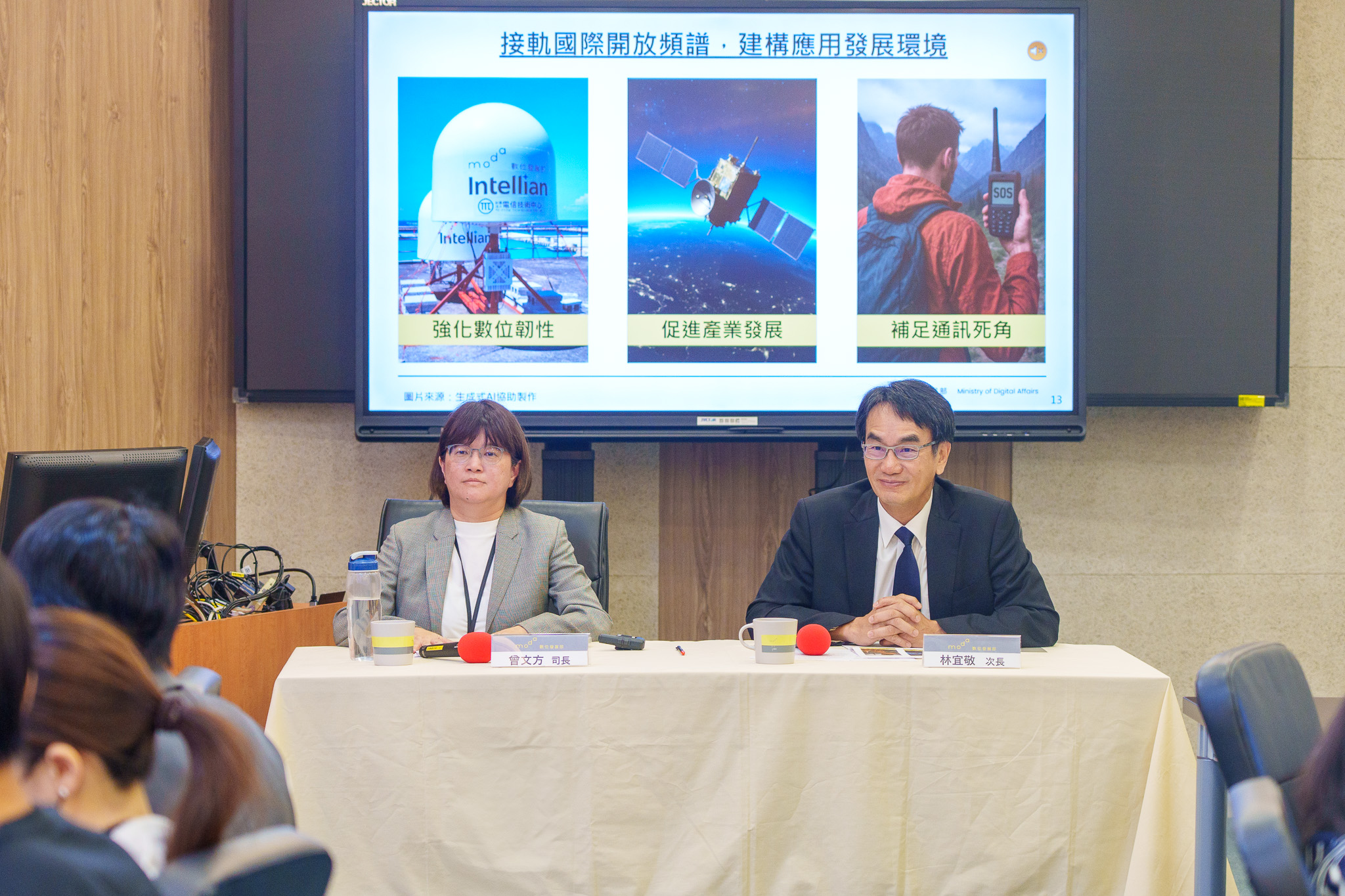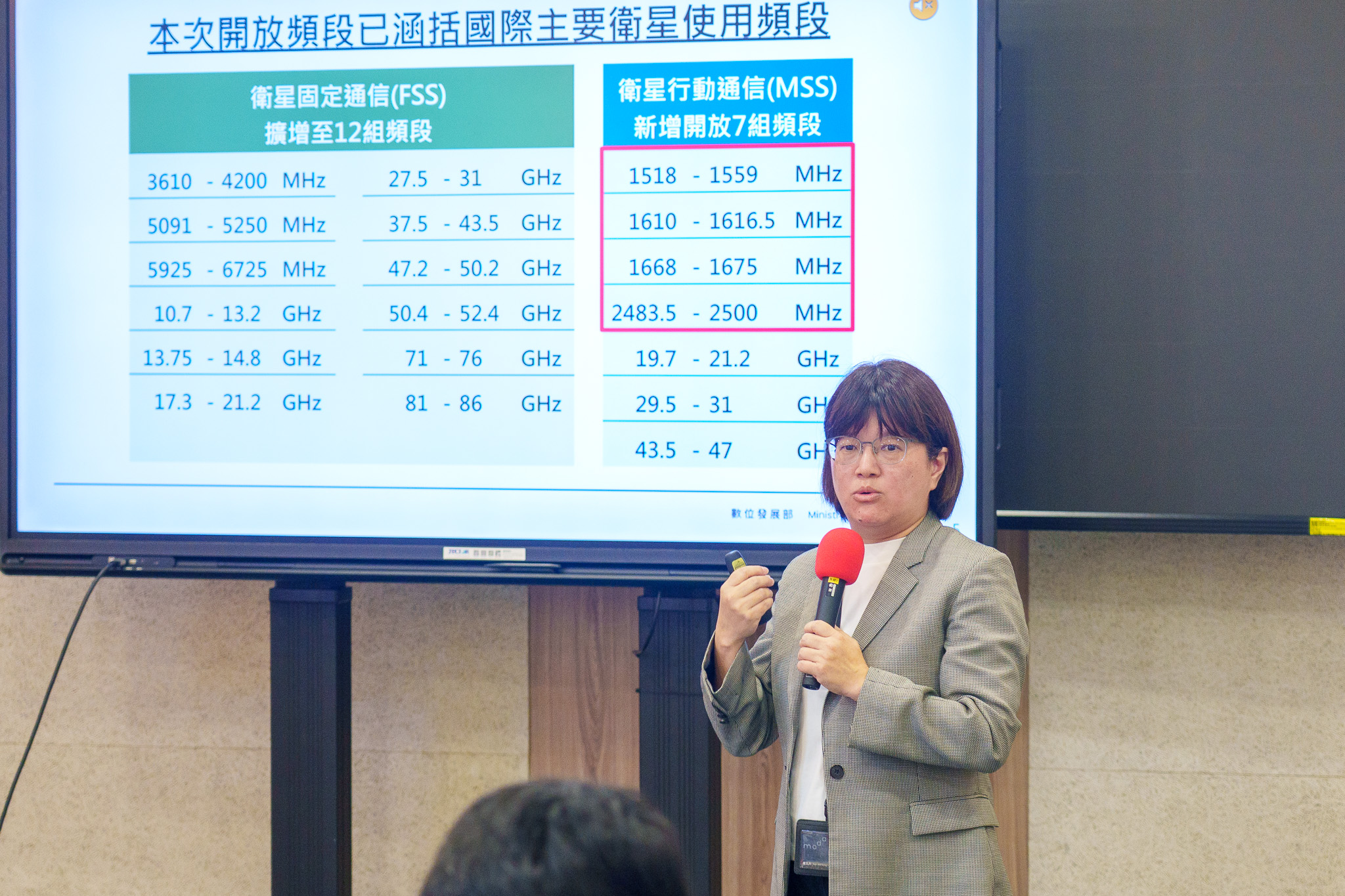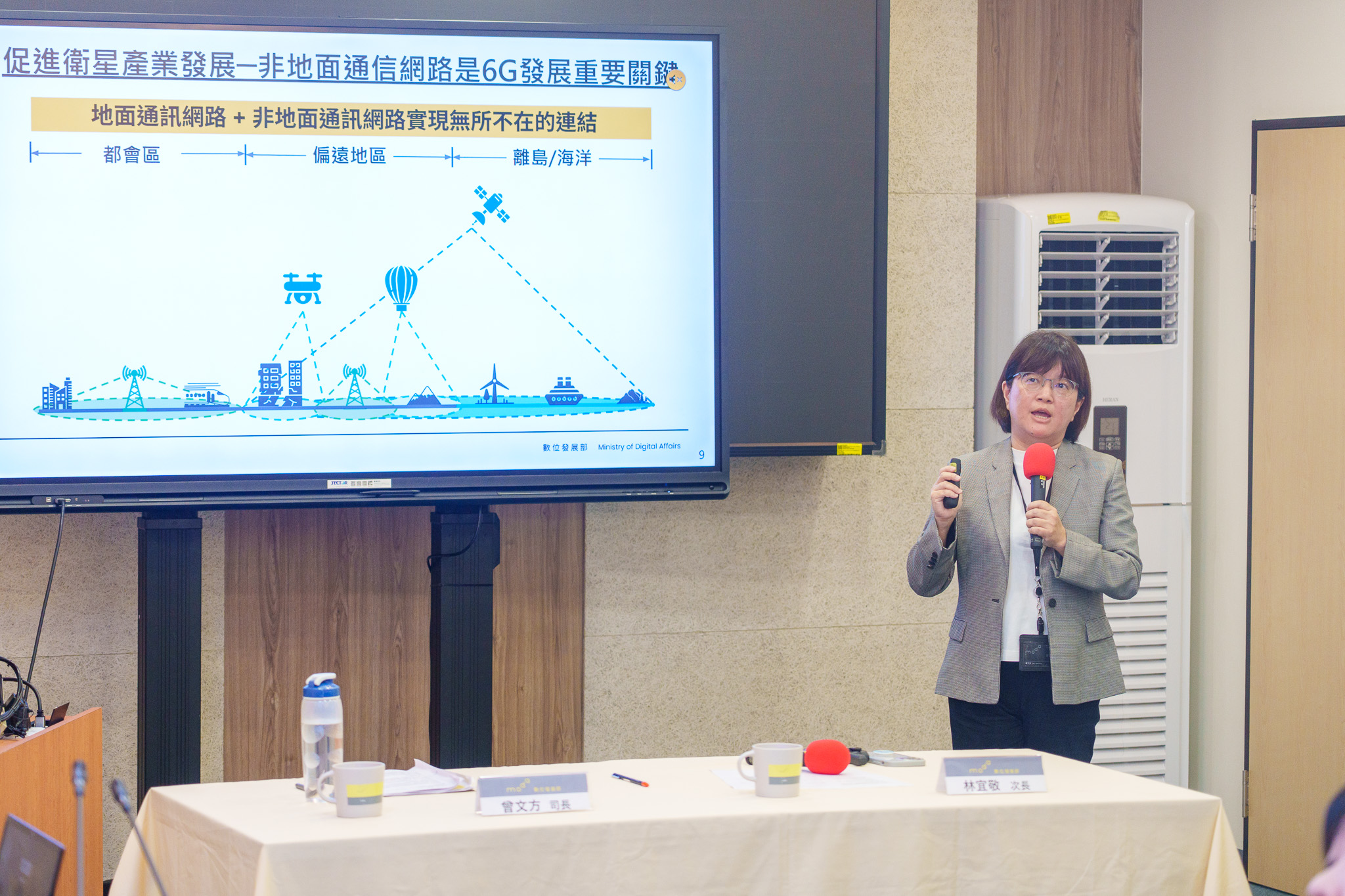The Ministry of Digital Affairs Opens Applications for Mobile Satellite Communication Frequencies
The Ministry of Digital Affairs (MODA) announced on June 24th the completion of revisions to Matters Concerning Applications by Telecommunications Enterprises for the Assignment of Radio Frequency for Satellite Communications, Operation Directions reviewing applications from telecommunications companies for allocation of radio frequencies for satellite communications, Fee-charging Standards for the Application for Radio Frequency Allocation Review by Telecommunications Enterprises, and Standards for the Usage Fees of Radio Frequency. These four related regulations formally opened the application process for mobile satellite communication frequencies for use in public telecommunications services. The revisions aim to strengthen Taiwan's digital resilience, expand telecommunications coverage, and promote the alignment of the satellite industry with international technologies.
The Ministry stated that, to support the development of next-generation satellite communication services and related industries, it has finalized the necessary regulatory amendments and is now accepting applications from operators. In 2022, four internationally popular frequency bands for fixed satellite communication were released. In February 2025, the "Radio Frequency Supply Plan" was revised to open seven Mobile Satellite Service (MSS) frequency bands and expand the number of Fixed Satellite Service (FSS) bands to twelve. Additionally, the validity period for frequency use licenses has been extended from two years to five years to better accommodate the diverse needs of the market.
The Ministry explained that the International Telecommunication Union (ITU) has categorized satellite communication frequencies into fixed and mobile uses. Fixed satellite frequencies are typically for point-to-point services, including broadband internet, submarine cable backup, subsea cable communications, and satellite news gathering (SNG) vehicles. In comparison, mobile satellite frequencies are for mobile services, including satellite phones and search-and-rescue location devices.
The MODA further noted that as communication technologies transcend, consumers are likely to benefit more directly. Satellite applications are becoming increasingly diverse and can significantly enhance emergency communication capabilities. Some newer smartphones come equipped with built-in emergency satellite communication functions, allowing users to access SOS services when they are outside of mobile network or Wi-Fi coverage. This technology provides critical support in mountainous areas or on remote islands, helping to safeguard public safety.
The Ministry emphasized that releasing satellite frequencies will promote the deployment of satellite-based services, enhance digital resilience, and stimulate the growth of satellite-related industries. Looking ahead, the MODA will continue to monitor global technological and industry trends, conduct ongoing assessments of spectrum resources, and release frequencies as needed to ensure Taiwan's communication resilience and industrial competitiveness. This will enable the public to benefit from cutting-edge satellite applications and innovative services.


